As noted in yesterday's post I visited my friend Mike's garden again this weekend. On the way back I drove by a garden display which I've seen every time I visited him for the last two years, at the St. Louis Community College Meramec campus.
It was this planting of castor beans that got me to finally stop, take a closer look at the garden, and take some photos.
This garden is relatively new I think... created within the last 5-10 years on what was once just empty lawn. Or maybe it's been here forever and I just didn't notice it as I wasn't yet obsessed by gardening and plants.
As was the case with yesterday's photos I didn't have my camera with me, so just used the iPhone camera. Not ideal I admit, but low-quality photos are better than none at all -- especially with frosts and freezing temperatures arriving soon.
One thing this garden has is space, which lets them plant masses of everything. There were dozens of castor beans planted together here, and a "hedge" of papyrus:
Too bad you can only see the papyrus stems from the back, as this is for me one of their best features.
The designers of this bed know the power of the salvias in a garden (as I do) and have three different types planted in drifts together. 'Black and Blue' caught my eye first:
They also had a nice Salvia coccinea red variety as well as a "coral" type:
The bees were just swarming over all of these sages!
They did a great job mixing different colors and textures here. If only I had acres of space and a budget to match...
Look at this layering -- just fantastic:
That's the castor bean patch in back, with papyrus in front, then some red-leaved hibiscus I believe, and I totally forgot to look at the ID tag for the foreground green plant (most of the plants had ID tags). My eyes kept getting pulled back to the towering castor beans:
Although the massed plantings were amazing, there were some individual specimens that were equally so. This dawn redwood was just brilliant, its seed clusters adding just the right amount of contrast to the fiery foliage:
This next small tree is probably a Tamarisk or "salt cedar", which I first saw at the Missouri Botanical Garden last year. I'd really like to grow this plant but I'm not sure where I'd put it.
If I had a dawn redwood maybe I'd plant them together, creating an alien landscape of feather trees:
I'm glad I stopped to check out this garden up-close, but now I really want to go back with my good camera. I'm not sure the weather will be cooperating this week, but I'll see what I can do.
There's always next year too!
.

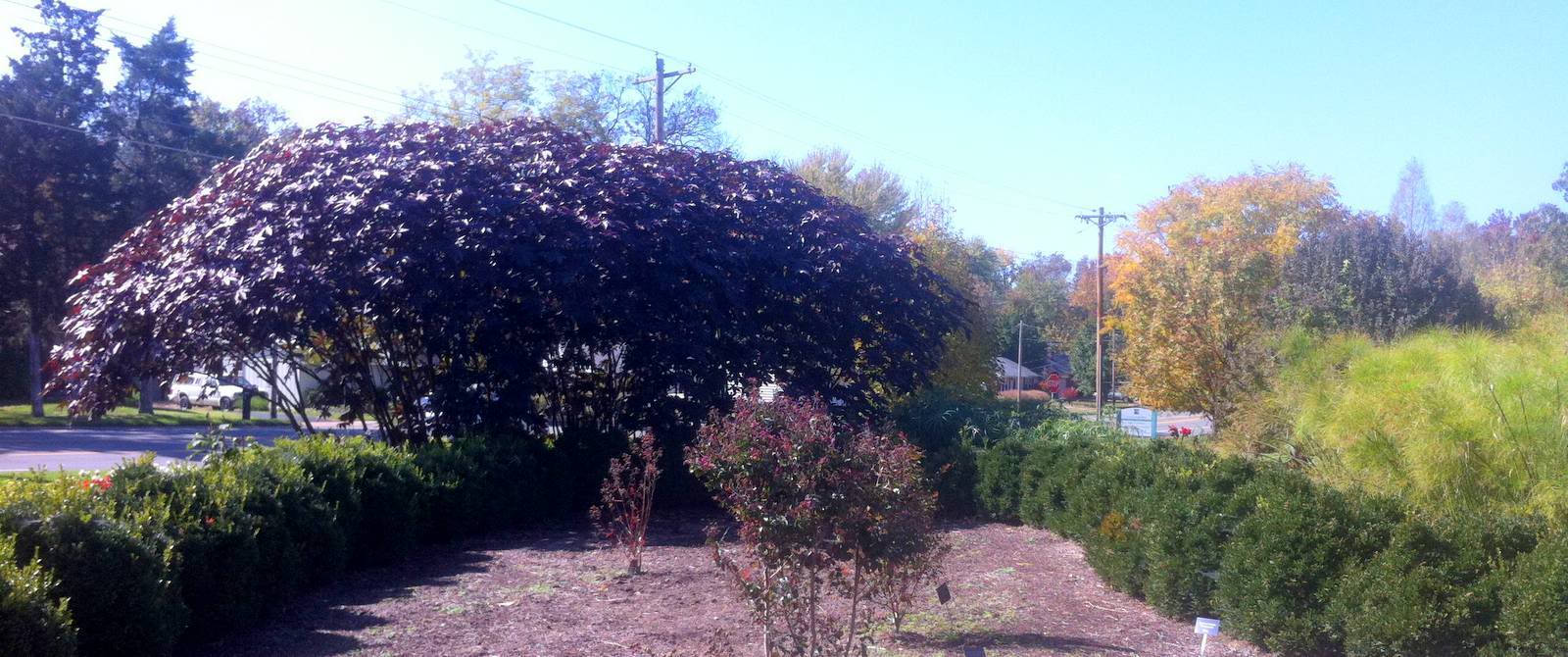
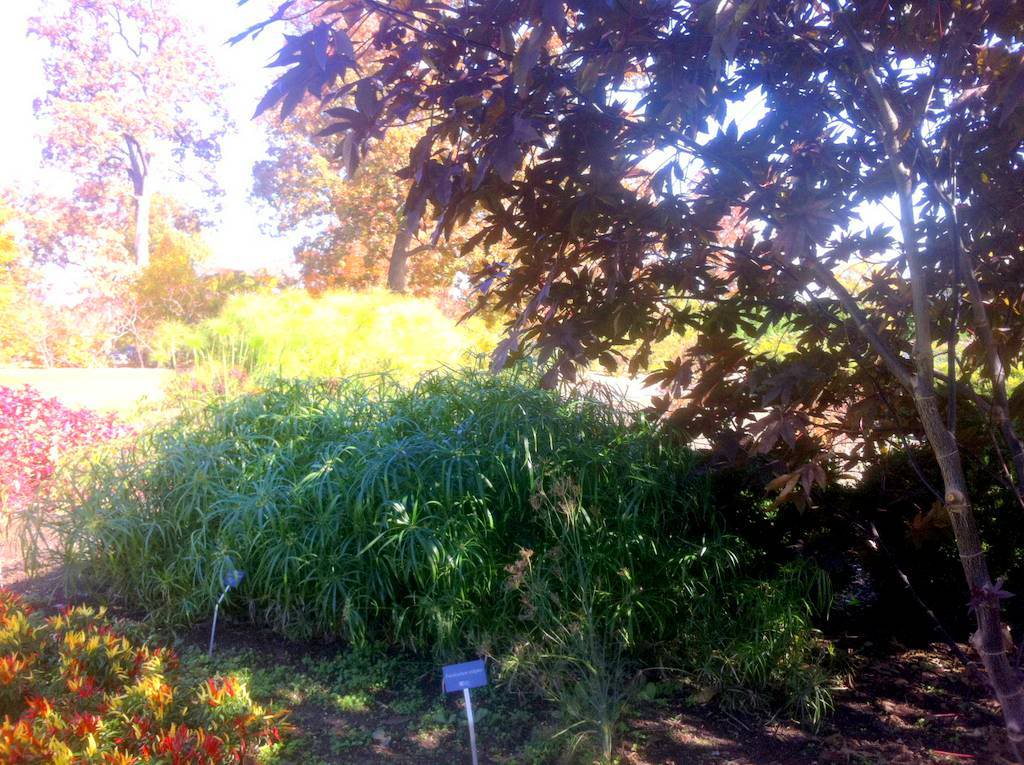
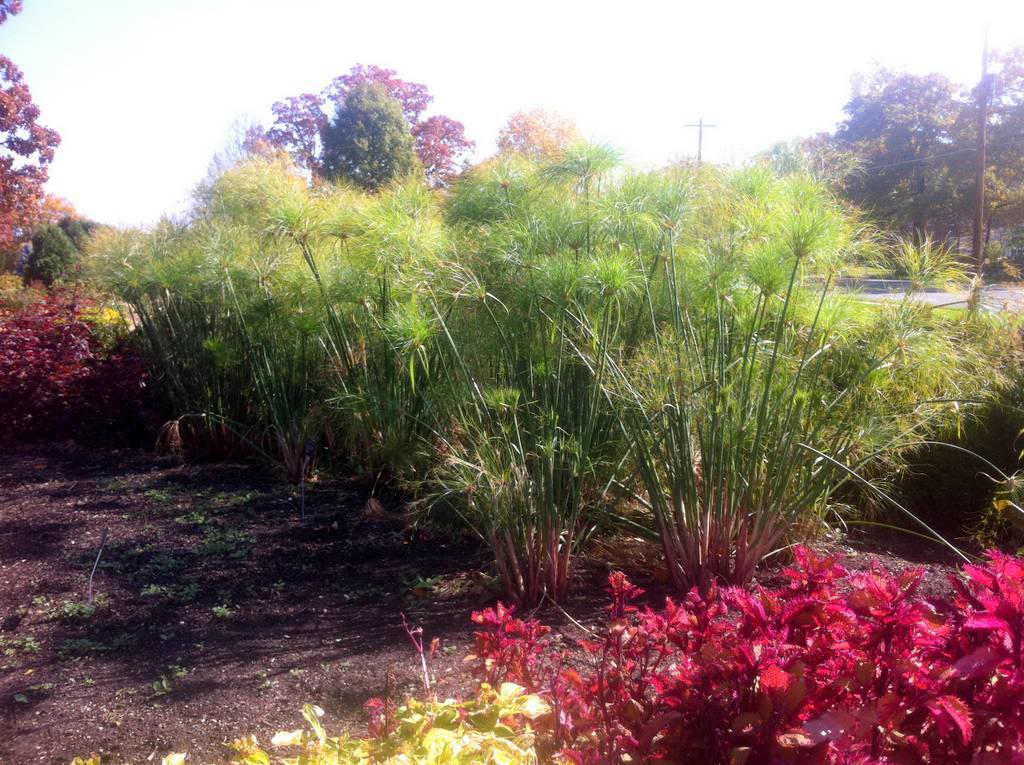
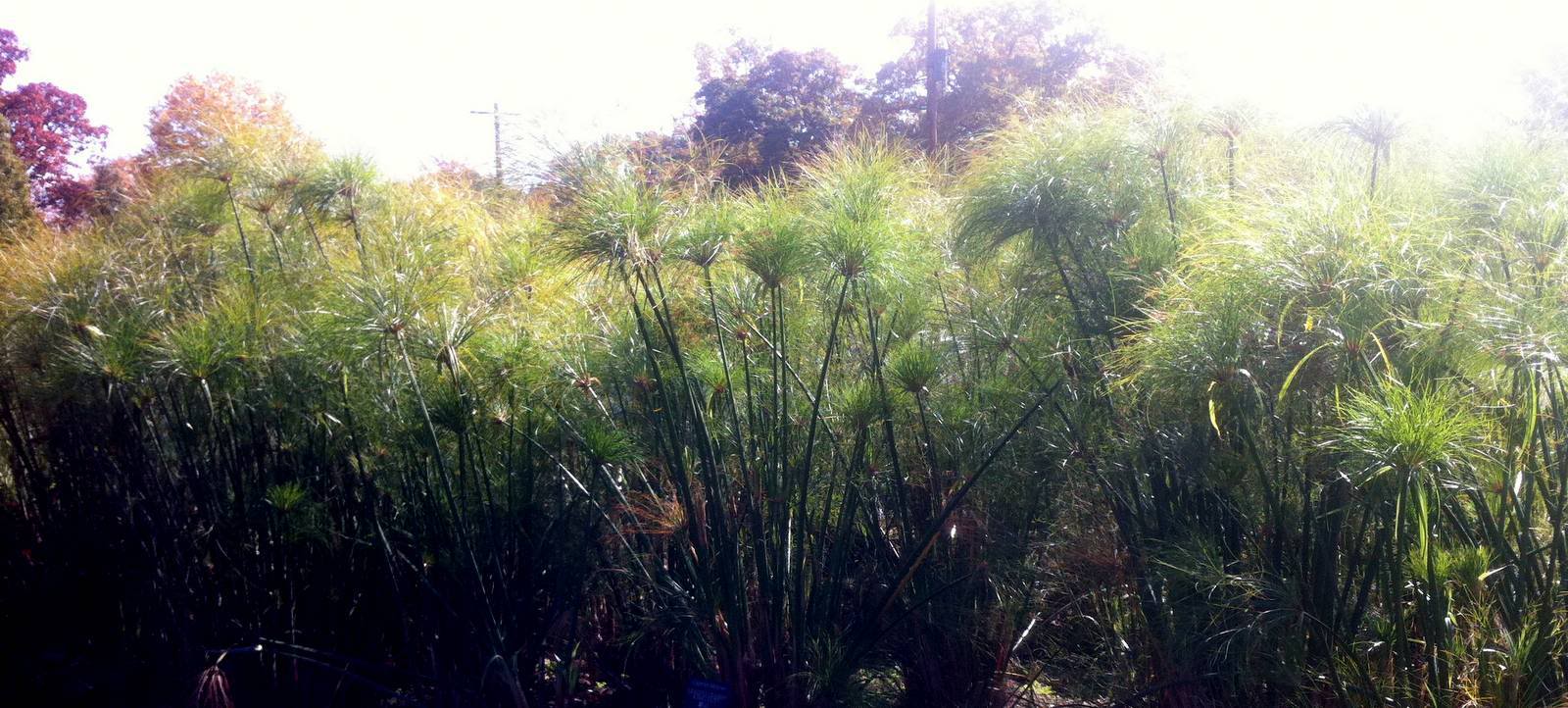
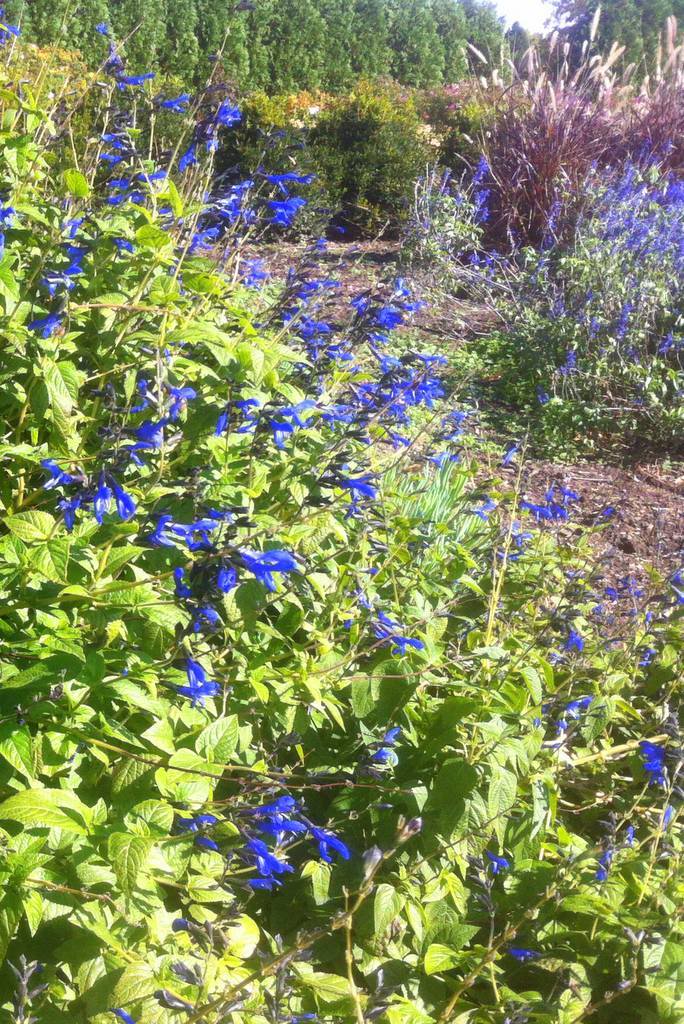

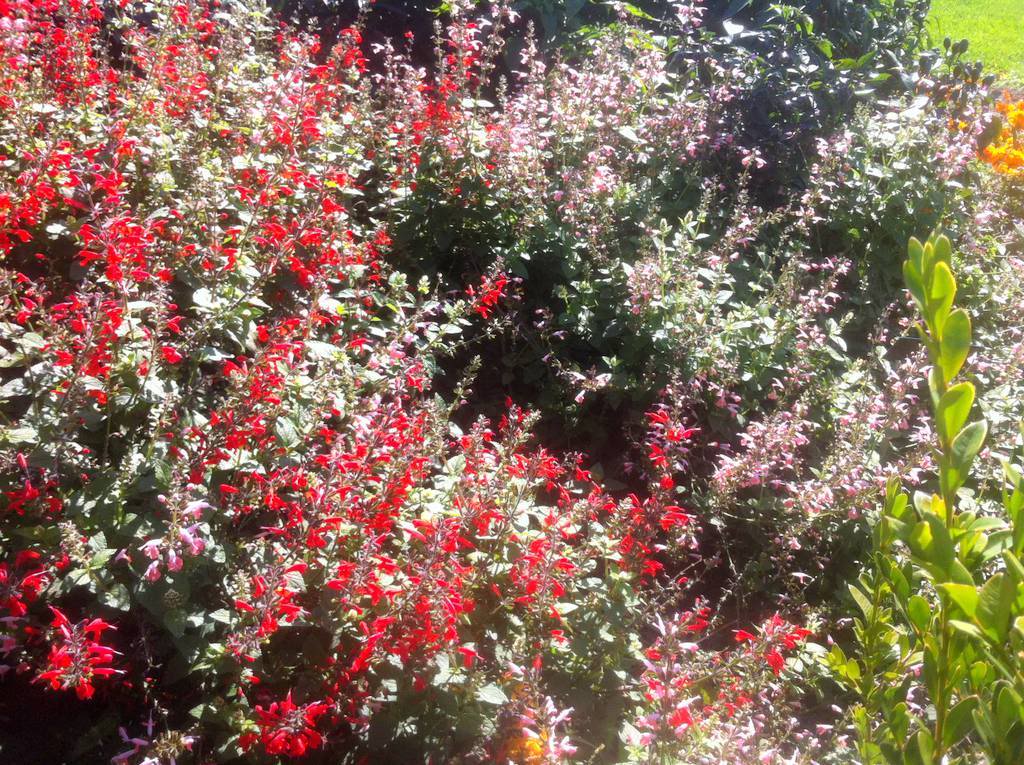
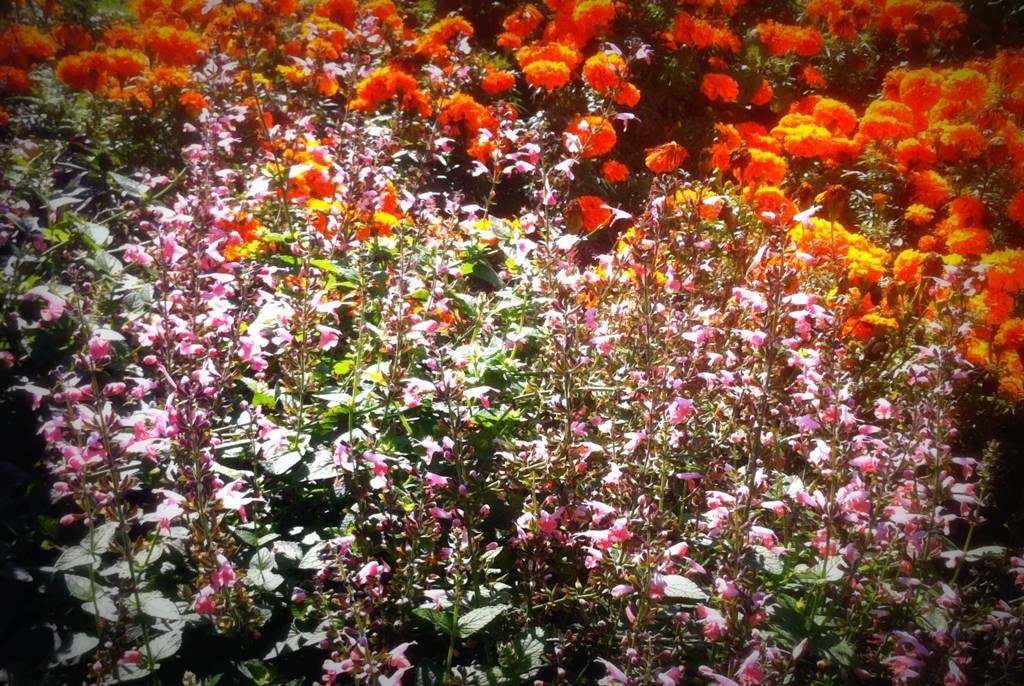

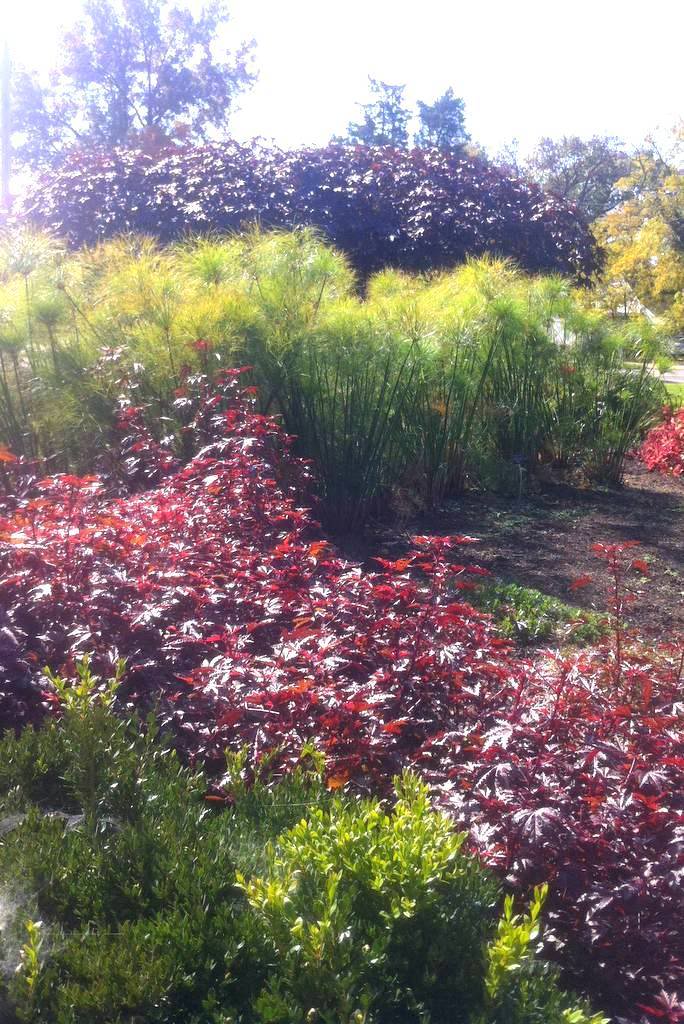
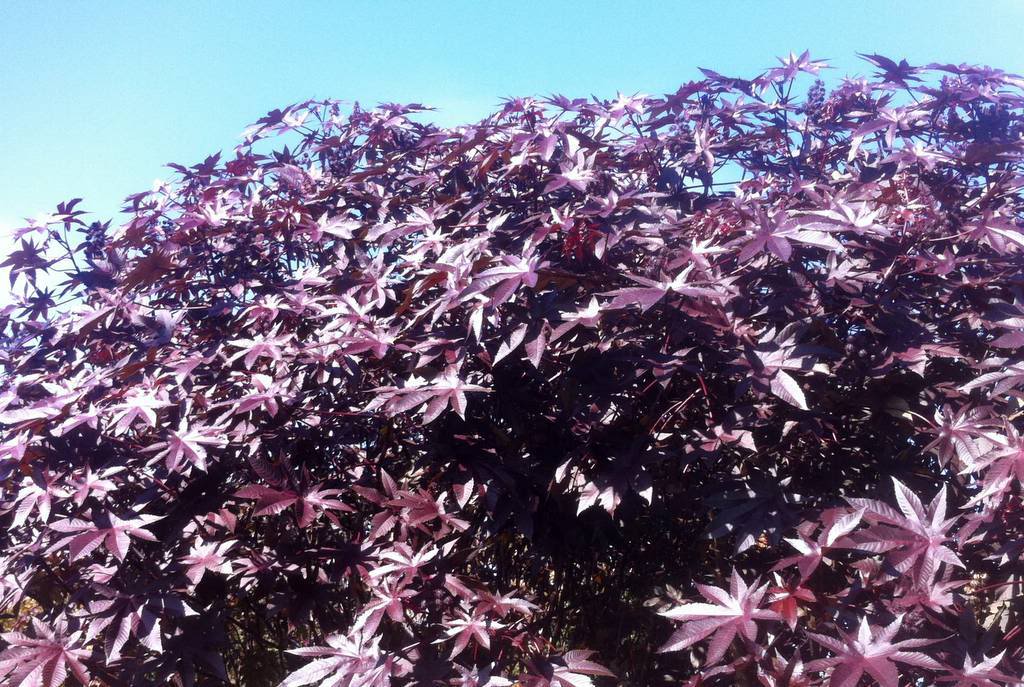

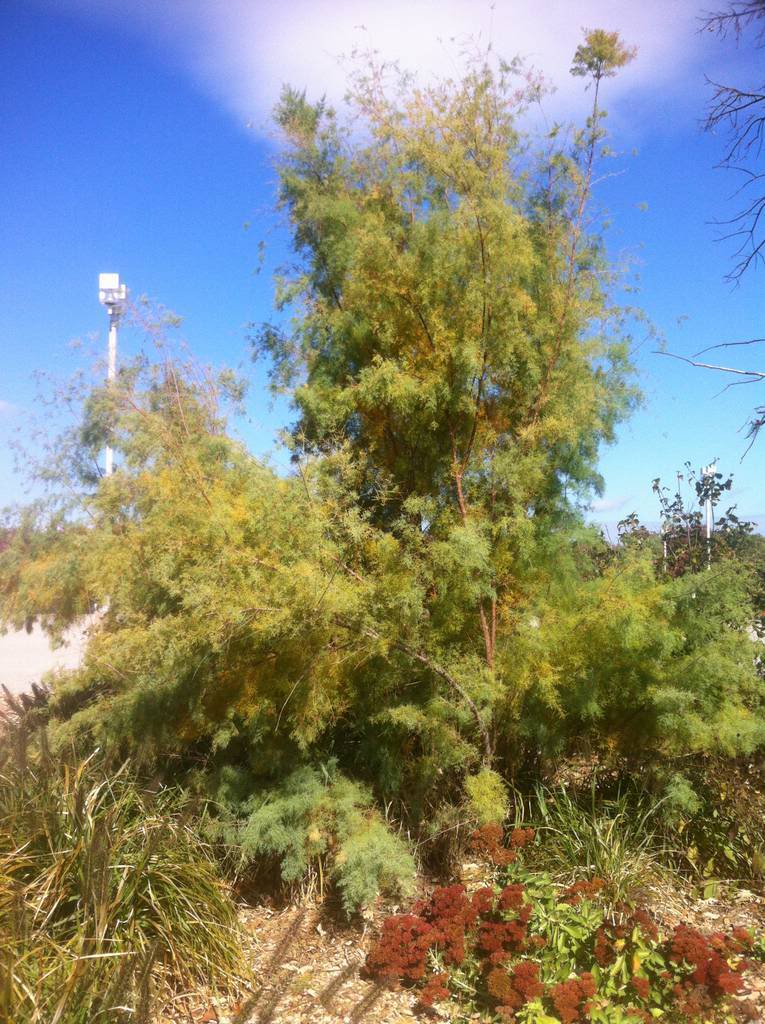

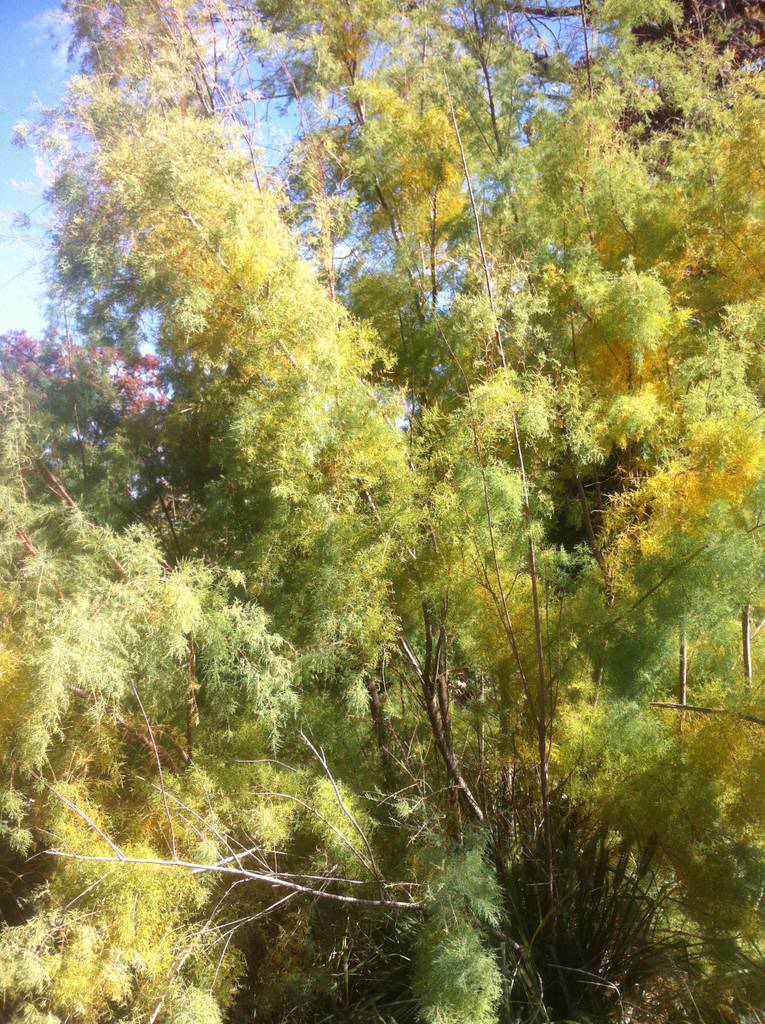
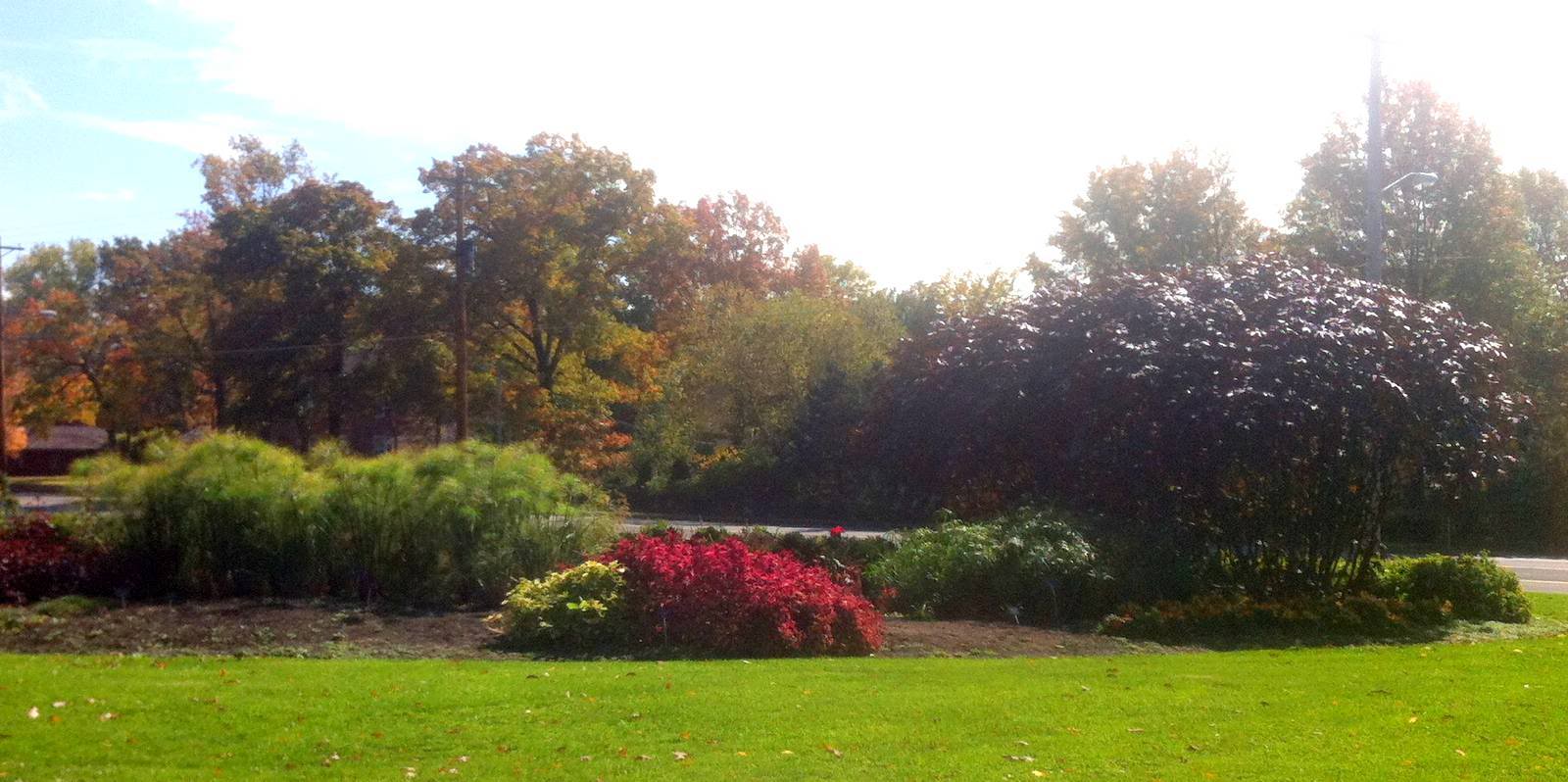
Just beautiful. It seems that many of their plants are grown as annuals, right? I hope you'll get a chance to go back with your good camera.
ReplyDeleteMost of them are annuals. There are some perennials and shrubs in there, but all the impact stuff was not cold-hardy here.
ReplyDeleteWow -so many different types of plants I have not seen before - cadtor beans?? Wow! They are amazing - are they edible?
ReplyDeleteBarbie: castor beans are extremely poisonous! It may not be obvious in the photos, but their plants are at least 12' tall. If that's too big for your garden, grow them in a pot.
ReplyDeleteWow! I've never seen such a large mass of castor beans or papyrus. Many of us wish for more space and a budget to match. Sigh.
ReplyDelete